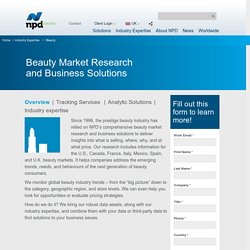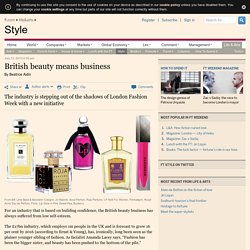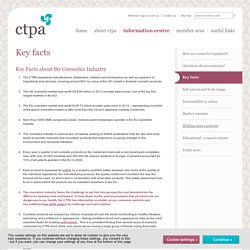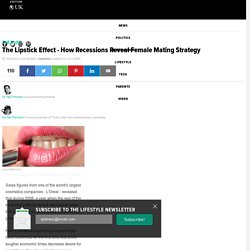

Beauty Market Research in UK - npdgroup.co.uk. Since 1996, the prestige beauty industry has relied on NPD’s comprehensive beauty market research and business solutions to deliver insights into what is selling, where, why, and at what price.

Our research includes information for the U.S., Canada, France, Italy, Mexico, Spain, and U.K. beauty markets. It helps companies address the emerging trends, needs, and behaviours of the next generation of beauty consumers. We monitor global beauty industry trends – from the “big picture” down to the category, geographic region, and store levels. We can even help you look for opportunities or evaluate pricing strategies. British beauty means business. The industry is stepping out of the shadows of London Fashion Week with a new initiative From left: Lime Basil & Mandarin Cologne, Jo Malone; Aoud Parfum, Roja Parfums; LP No9 For Women, Penhaligon; Royal Arms Eau de Parfum, Floris; Lip Glow in Pink Sweet Pea, Burberry For an industry that is based on building confidence, the British beauty business has always suffered from low self-esteem.

The £17bn industry, which employs 1m people in the UK and is forecast to grow 16 per cent by 2016 (according to Ernst & Young), has, ironically, long been seen as the plainer younger sibling of fashion. As facialist Amanda Lacey says, “Fashion has been the bigger sister, and beauty has been pushed to the bottom of the pile.” Beauty and Personal Care in the United Kingdom. Beauty and personal care continues to grow The UK beauty and personal care market continued to grow in 2014.

This was thanks to a number of categories in which both economy and niche premium brands reinvigorated sales through new formats and multi-functional products, creating intense competition for a slice of the market. An increasing obsession with image has intensified the desire of UK consumers for a consistently well-groomed appearance. A new younger demographic of young teen and tween consumers, particularly influenced by social media, is also interested in beauty and personal care products as a result of growing social pressures with regard to appearance from a younger age. CTPA - Key facts. Key Facts about the Cosmetics Industry Historical use of cosmetics Cosmetic products have been in existence for thousands of years – In 400 BC, Greek Olympic athletes covered their bodies with a ‘sunscreen’ mixture of sand and oil to protect their skin from the sun!

The Lipstick Effect - How Recessions Reveal Female Mating Strategy Sales figures from one of the world's largest cosmetics companies - L'Oreal - revealed that during 2008, a year when the rest of the economy suffered record declines in sales, this cosmetics leviathan experienced sales growth of 5.3%.

Now a series of psychology experiments have confirmed for the first time that while tougher economic times decrease desire for most items, they also reliably increase women's yearning for products that boost their attractiveness. Psychologists contend that these 'lipstick' effects are operating largely below conscious awareness of men and women, and therefore require precise experiments to reveal them. This is the first experimental demonstration of the famous 'lipstick effect' with psychologists confirming this psychological phenomenon is driven by women's desire to particularly attract mates 'with resources'.
For example, wars are known for moments of most intense romance. But was this men or women who were buying cosmetics or personal care products? The Beauty Economy.